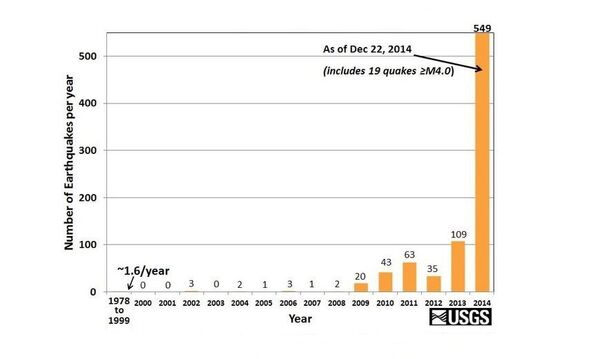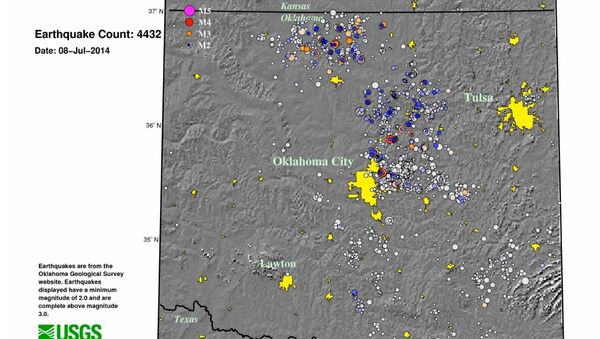Analysts say it’s because of fracking, the process of “fracturing” rock by hydraulically-pressured liquid (water) to extract tight oil or natural gas.
The U.S. Geological Survey – which tracks earthquake activity – says there were more than 500 magnitude 3.0 or greater in the Sooner state, up dramatically from 109 last year and just 35 in 2012.
As of this last week of December 2014, there were 549 tremors of 3.0 or higher, with 19 of at least 4.0 or greater.
Compare all that to the average annual number of tornadoes per 10,000 square miles in Oklahoma: NINE.
Fracking critics aren’t the only ones pointing fingers at the controversial practice; a recent USGS statement is pretty clear, linking the sharp increase in tremors in the state to fracking:
“We’ve statistically analyzed the recent earthquake rate changes and found that they do not seem to be due to typical, random fluctuations in natural seismicity rates,” said USGS seismologist Bill Leith.
The Oklahoma Geological Survey concluded pretty much the same thing, finding “that shortly after hydraulic fracturing began small earthquakes started occurring, and more than 50 were identified, of which 43 were large enough to be located. Most of these earthquakes occurred within a 24-hour period after hydraulic fracturing operations had ceased.”

“Fracking” is highly controversial, with proponents saying it benefits everyone to having readily available gas and oil, while opponents point out that not only does it make the land unstable (and therefore more susceptible to earthquakes) but it depletes freshwater supplies and increases environmental pollution. Oil output has doubled in Oklahoma since 2010, from 160,000 to 320,000 barrels per day, largely due to fracking for tight oil, which is petroleum that consists of light crude oil often found in shale or tight sandstone.
Fracking is supported by the Oklahoma state government, which last year joined with Alabama, Alaska, and Montana to protest the U.S. Bureau of Land Management’s plans to regulated fracking on federal lands.
Oklahoma alone is home to 10 percent of the nation’s oil wells, and has thousands of injection and disposal wells.




